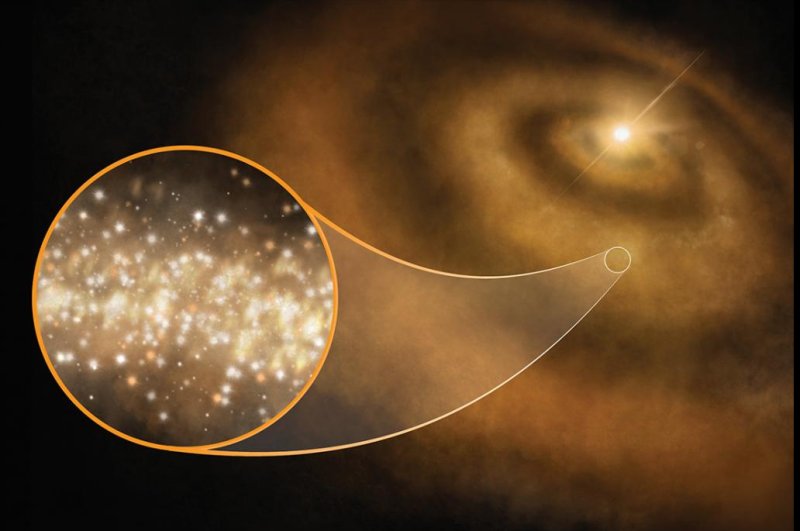New observations confirmed tiny carbon diamonds explain the mysterious shimmer known as anomalous microwave emission. Photo by S. Dagnello/NRAO/AUI/NSF
June 11 (UPI) -- Astronomers have discovered microscopic gemstones surrounding three infant star systems in the Milky Way. Researchers believe tiny diamonds account for the shimmer of cosmic microwave light that has puzzled astronomers for 20 years.
The shimmer is known as anomalous microwave emission, or AME. For decades, scientists have struggled to explain why the odd glow emanates from several of the galaxy's protoplanetary disks.
Until now, scientists thought the most likely culprit was a type of carbon-based molecule called a polycyclic aromatic hydrocarbon, or PAH. The interstellar particles yield a faint infrared signature.
Another possible culprit, hydrogenated nanodiamonds, produce a similar but slightly different infrared pattern.
Using the National Science Foundation's Green Bank Telescope in West Virginia and the Australia Telescope Compact Array, astronomers were able to observe AME surrounding three young stars, V892 Tau, HD 97048 and MWC 297. Scientists found the AME emissions most directly matched the infrared pattern produced by nanodiamonds.
"This is the first clear detection of anomalous microwave emission coming from protoplanetary disks," Green Bank astronomer David Frayer said in a news release.
Previous observations have shown other star systems produce the signature made by PAHs but show no signs of AME, suggesting nanodiamonds alone account for the faint shimmer.
Studies have previously suggested the presence of nanodiamonds, tiny particles of crystalline carbon, in the protoplanetary disks surrounding distant stars, but the latest findings -- published this week in the journal Nature Astronomy -- are the first to link the particles with AME.
Scientists believe cosmic nanodiamonds are formed when vaporized carbon atoms become superheated by young stars.
Nanodiamonds produce what's called a "dipole moment," yielding an electromagnetic radiation when they spin. Because they're so small, they can spin at tremendous speeds, emitting electromagnetic radiation in the microwave range.
"This is a cool and unexpected resolution to the puzzle of anomalous microwave radiation," said Jane Greaves, an astronomer at Cardiff University in Wales. "It's even more interesting that it was obtained by looking at protoplanetary disks, shedding light on the chemical features of early solar systems, including our own."















